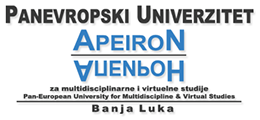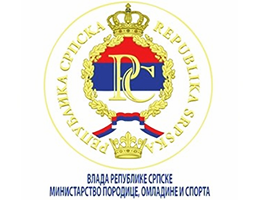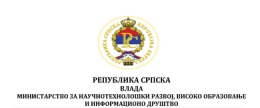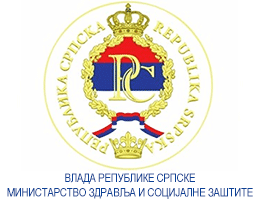Razlike u motoričkim sposobnostima preadolescenata uključenih u program fizičkog vaspitanja i rukometnog treninga
Volume 1, Issue 1 (2011)
Volume 1, Issue 1 (2011)
Razlike u motoričkim sposobnostima preadolescenata uključenih u program fizičkog vaspitanja i rukometnog treninga
Apstrakt:
Izvršeno je poređenje motoričkih sposobnosti nakon šestomjesečnog matičnog programa fizičkog vaspitanja i specifičnog rukometnog treninga kod ispitanika (51 rukometaš, 70 učenika) koji su imali 3 treninga sedmično (1 trening= 60 minuta), a sadržaj treninga su činile vježbe vođenja lopte, skok šut u daljinu i u visinu, kontranapad i ostale tehnike u odbrani. Uočene su statistički značajne razlike između ove dvije grupe u pogledu brzine, agilnosti i gipkosti, a razlike idu u korist rukometne grupe. Rukometni trening može značajno poboljšati motoričke sposobnosti preadolescenata.
Ključne riječi:
program fizičkog vaspitanja, rukometni trening, preadolescenti
Puni tekst:
Reference:
- BAR-OR, O. (1989) Trainability of the pre-pubertal child. The Physician and Sports Medicine, 17, 62-82.
- BIRER, B., & LEVINE, R. (1987) Performance parameters in children and adolescent athletes. Sport Medicine, 4, 211 - 227.
- BLOOMFIELD, J., BLANKSBY, A., ACKLAND, R., & ELLIOT, C. (1985) The anatomical and physiological characteristics of preadolescent swimmers, tennis players and non competitors. Australian Journal of Science and Medicine in Sport, 40, 19-23.
- BURTON, A., GREER, N., & WIESE- BJORNSTAL, D. (1992) Changes in overhand throwing patterns as function of ball size. Pediatric Exercise Science, 4, 50-67.
- CARDINALE, M. (2004) Handball performance: physiological considerations & practical approach for training metabolic aspects. European Handball Federation Periodical, 1, 3-12.
- EUROFIT. (1986) European test of physical fitness. Thessaloniki: SALTO.
- FARROW, D., YOUNG, W., & BRUCE, L. (2005) The development of a test of reactive agility for netball: a new methodology. Journal of Science and Medicine in Sport, 8, 52 - 60.
- GARL, T., RING, L., & BOMBA, B. (1988) Evaluating basketball conditioning. N.S.C.A, Journal, 10, 46-47.
- HOARE, D. (2000) Predicting success in junior elite basketball players the contribution of anthropometric and physiological attributes. Journal of Science and Medicine in Sport, 3, 391-405.
- HUFF, J. (1972) Auditory and visual perception of rhythm by performers skilled in selected motor activities. Research Quarterly, 43, 197-207.
- LIEMOHN, W. (1983) Rhythmicity and motor skill. Perceptual and Motor Skills, 57, 327-331.
- MacKENZIE, T. L., ALCARAZ, J., & SALLIS, J. F. (1994) Assessing children’s liking for activity units in an elementary physical education curriculum. Journal of Teaching in Physical Education, 13, 206-215.
- MILLS, J., TAUNTON, J., & MILLS, W. (2005) The effect of a-10-week training regimen on lumbo-pelvis stability and athletic performance in female athletes: randomized-controlled trial. Physical Therapy in Sport, 6, 60-66.
- MOLLER, M., OBERG, B., & GILLGUIST, J. (1985) Stretching exercise and soccer: Effect of stretching on range of motion in the lower extremity in connection with soccer training. International Journal Sports Medicine, 6, 50-52.
- MOSCAI, L. (2002) Analyzing and evaluating the 5th men’s European Handball Championship. European Handball Federation Periodical, 1, 3-12.
- PAPAVASILIOU, Η. (2003) Evaluating Greek high-school students’ physical condition by means of the International Physical Performance Test Profile for boys and girls from 9-17 years. Physical Education and Sports, 49, 7-25.
- PAPPAS, A., MORGAN, W., SCHULZ, L., & DIANA, R. (1995) Wrist kinematic during pitching: preliminary report. The American Journal of Sports Medicine, 23, 312-315.
- PIENAAR, A., & VAN DER WALT (1988) The influence of participation in a gymnastics program on selected anthropometrical variables of six to nine-year old girls. Journal for Research in Sport Physical Education and Recreation, 11, 39-47.
- RAMADAN, J., & BYRD R. (1987) Physical characteristics of elite soccer players. Journal of Sports Medicine and Physical Fitness, 27, 424-428.
- ROBERTSON, S., & ELLIOT, D. (1996) Specificity of learning and dynamic balance. Research Quarterly for Exercise and Sport, 67, 69-75.
- SECO, R. (1998) Men’s Junior European Championship/Austria. European Handball Federation Periodical, 2, 35-46
- TABORSKY, F. (2001) Game performance in handball. European Handball Federation Periodical, 2, 23-26.
- ZAKAS, Α., & GELADAS, N. (2002) Handball match effect on the flexibility of junior handball players. Journal Human Movement Studies, 43, 321-330.






